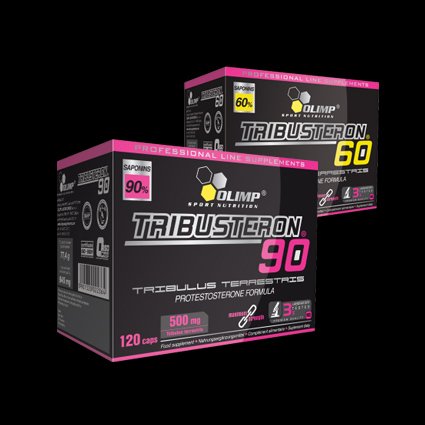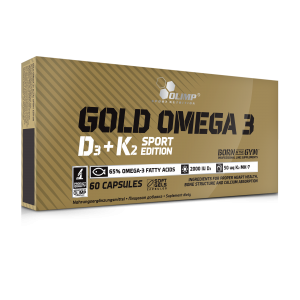TESTOSTERONE – production and conversions

WINDING UP TESTOSTERONE
Testosterone is an anabolic hormone, the most important one for exercise adaptation. It is mainly thanks to it that athletes can develop their exercise capacity – shape their motor and morphological characteristics: strength, speed, endurance and muscle mass.
For this reason, this hormone keeps most of the athletes, especially bodybuilders, awake at night, and if there appears any new formulation influencing its activity, they immediately ask for it...
TESTOSTERONE METABOLISM
The level and activity of testosterone are individual characteristics. Although they may increase, as a result of body’s adaptation to an increased strain, this mechanism is limited by the unique overall adaptation potential of the body. Therefore, it has already long ago been observed that the administration of testosterone and its derivatives – anabolic androgenic steroids – results in a rapid increase in exercise capacity of athletes. Thus was born steroid doping...
The taking of testosterone and its derivatives by athletes is associated with numerous serious health risks, and hence this practice was considered to be ethically reprehensible, stigmatized and forbidden by sports regulations. In view of the above, work was conducted on means of enhancing the level and activity of body’s own (endogenous) testosterone, as this practice is completely safe for health. In physiological conditions and ranges, elevated levels of the hormone lead to an increase in the activity of defence mechanisms, guarding the body against the adverse effects of its activity.
There are three basic, natural ways of interfering with testosterone metabolism: 1) increasing the rate of hormone synthesis; 2) inhibiting the conversion into inactive, also in exercise term, or harmful metabolites; 3) affecting the quantity and quality of steroid receptors.
SYNTHESIS
Testosterone is formed in the process of steroidogenesis, or condensation of active acetate. The molecules of active acetate are also called acyl radicals and are the smallest building blocks of testosterone rings.
As mentioned before, intensive training leads to an increase in the rate of synthesis of testosterone. During exercise, there occurs intensive burning of nutrients, which prevents energy delivery to working muscles. Burning is a complicated, multistep enzymatic process, however, the first few stages for each nutrient involve its enzymatic conversion into acyl radicals. Now, the acyl radicals are generally subject to further conversions aimed at metabolic energy acquisition. But not always. Not all molecules of active acetate will serve this purpose, as some of them will condense and turn into testosterone molecules. The more acyl radicals, the greater the likelihood of condensation. The body has at its disposal the largest pool of radicals right after very intense strength exercise, as plenty of them are generated during it, although after its completion all the degradation pathways cease almost immediately. Thus now, they can intensively condense and build rings of extra testosterone. This mechanism explains well the relationship between strenuous exercise and increased testosterone levels resulting from hard muscle work.
This response may be simulated in other periods than post-workout one and, thus, testosterone synthesis may be stimulated in a stable and strong manner, provided the levels of active acetate are increased. The problem lies in the fact that the molecules of active acetate are radicals – hence their synonym: acyl radicals. Radicals are molecules unstable electrochemically, and present in a free state (as free radicals) their life span is nanoseconds. Thus, there is no possibility of creating an acyl formulation. The only thing left is to find substances which, when bound with acyl radicals, may introduce them into the body and release them in the process of acetate condensation – testosterone synthesis. Science has found two such compounds: acetylcysteine (NAC or ACC) and acetyl-L-carnitine (ALC).
The former, used most often to treat respiratory tract complaints, has also gained popularity in sports. It is excellent as an antioxidant, however, as a stimulator of testosterone, has a slight disadvantage – the acyl radicals carried by it cannot be directly incorporated into the acetate condensation process, as they must first to be released from cysteine and transferred to carnitine.
Carnitine is generally involved in the storage and distribution of acyl radicals. When bound to active acetate, it turns into acetyl-L-carnitine. As ALC, it delivers acyl radicals for testosterone synthesis, among other things. It is mainly for this reason that ALC has gained exceptional popularity among athletes.
Extremely important steps in the synthesis of testosterone molecules are hydroxylation processes controlled by other radicals – the hydroxyl radicals (named “hydroxyl” as they mainly build water molecules). They are also of particular importance to the aromatic (ring) compounds, such as testosterone, where the carbon atoms combine to form a closed structure. The activity of the given compound depends on the amount of hydroxyl radicals attached to carbon atoms in the ring. The transfer of hydroxyl radicals is mediated primarily by a group of enzymes called dehydrogenases, all having one thing in common – their active site is formed by zinc atoms. And this is why the process of testosterone synthesis is extremely sensitive to the level of zinc in the diet...
Another element of fundamental importance here is magnesium. As mentioned before, radicals are electrochemically unstable and not bound live just nanoseconds. It is not enough for the enzymes to be able to use them. Magnesium has a certain unique feature – the ability to stabilize radicals. The body deals with the problem in such a way that all the reactions involving functional radicals – e.g. acyl, hydroxyl and phosphate ones – are carried out with the aid of magnesium atoms. It is clear then that testosterone cannot be produced without magnesium, because there will be no condensation of acetate or hydroxylation reactions. Without magnesium, there will be no muscle contraction or protein anabolism either, since these processes occur with the help of phosphate radicals stabilised by magnesium, and stored and distributed by phosphocreatine and ATP.
METABOLISM
Saponins, indoles and polyphenols – natural plant micronutrients – inhibit the conversion of testosterone into inactive, in terms of exercise, and harmful metabolites, such as estradiol, hydroxyestrone and dihydrotestosterone. The inhibition of testosterone metabolism – logically – raises its level. But this is just one of the reasons why the hormone levels go up.
Testosterone, like all hormones, remains under the control of a feedback mechanism. When the testosterone level rises, the enzymes, including aromatase, convert it to female oestrogens – primarily estradiol, estriol, estrone and hydroxyestrone, which inhibit the synthesis of testosterone by affecting the parent hormones – gonadotropic ones. Plant micronutrients decrease the activity of enzymes that convert testosterone into oestrogens. In this way, its synthesis is not inhibited and its level may rise...
Worth noting here are the health and the aesthetic aspects of inhibiting testosterone conversions. The conversion of testosterone into oestrogens is the cause of gynecomastia (growth of mammary glands) in athletes using banned steroids, and this can lead to breast cancer... The conversion of testosterone, particularly that from the pharmacy, into dihydrotestosterone (DHT) by the enzyme called alpha-reductase, is responsible for hair loss, pimples, as well as prostate hypertrophy (and consequently prostate cancer). As you can see, saponins, indoles and polyphenols are aids not only for exercise but for your health too!
There is a plant that contains all the three groups of active substances – it is called Tribulus terrestris...
RECEPTORS
The effect of testosterone on the development of functional capacity depends on the quantity and activity of steroid receptors, receiving the hormone signals and initiating protein anabolism in the muscle tissue. The number and activity of receptors is controlled by the zinc atoms, forming the so-called zinc fingers – structures translating the hormonal signals into the process of protein synthesis.
Zinc is a specific element, having the ability to give appropriate functional shapes to proteins. And these shapes (spatial structures) determine the activity of zinc proteins. In the case of zinc fingers, the protein shaped by zinc acts as a receptor. In the abovementioned dehydrogenases, involved in the synthesis of testosterone, zinc is responsible for their enzymatic activity. What is crucial in terms of exercise aid, zinc is also responsible for the hormonal activity of proteins – those with strong anabolic properties: insulin insulin-like growth factor (IGFs) and somatotropin. Thus, it can be freely stated that zinc is a mineral anabolic!
It has been shown that supplementation with highly absorbable zinc-magnesium acetyl L carnitine chelates and plant micro-nutrients from Tribulus has a positive effect on the endocrine regulation of the athlete's body and, consequently, on the development of their morphological and motor characteristic – muscle mass, strength, speed and endurance.
For this reason, increasingly more popular are combination preparations, based on the synergistic substances, co-intensifying their activity and affecting different stages of testosterone synthesis. As lately I have often been asked for an opinion on them, I believe this article will serve as a proper answer...
To conclude conventionally – they are an extremely effective and completely safe alternative to the prohibited and harmful steroid doping.
Sławomir Ambroziak, MSc Pharm
(Kulturystyka i Fitness Sport dla Wszystkich 10.2003)
BACK ›

